
Project management guide
Today’s fast-paced and complex environment requires organizations to adapt to changes quickly. On top, to generate growth, an organization might need to venture out from its core business or core processes to find a profitable business segment or idea or increase profitability. The high and still increasing demand for project managers shows that projects are becoming more important and the new way of dealing with today’s complex business environment.
What is a project?
According to the Project Management Institute (PMI), a project is “a temporary endeavour undertaken to create a unique product, service or result.” It has a specified goal with a defined time period and defined resources. On top, a project is not a routine operation, it brings together a team of people who usually do not work together. This can be across departments, across locations and including external partners. Projects can be of any type - development of a software, construction of a school, reinventing a manufacturing process, conducting research on a specific question, developing a new chocolate bar etc. All projects have in common that they have to be managed in a way to deliver according to the set goals, budgets, resources.
What is project management?
Project management is the process of steering a project through its lifecycle to complete it as per the project requirements. Usually, managing a project involves capturing the problem or insight, then planning the solution to the problem, initiating the project and executing, monitoring and closing of said plan. Thereby, resources, budget and time frame need to be considered. Project management is done across all industries, as the requirements to deliver new ideas fast in a competitive environment prevail everywhere.
What does a project manager do?
Project managers are facilitating the project’s success. They are responsible for the project’s goal and owns it. It is him/her who brings the project team together to work for this common goal. As facilitators, project managers help define the project’s goal, then plan, execute, monitor and close the project. They schedule the project, assign tasks and put together the project team. With these responsibilities, project managers have to combine organizational skills, an analytical mind, and exceptional people skills. Besides having the big picture, they also need to be in the detail to make sure the team delivers high quality. And they are always improving their own and their teams’ skills through retrospectives after project completion.
Project management triangle
Project managers with their teams experience limiting factors for their project. The triple constraint model is commonly used to explain this. Time, scope and cost are intertwined and not all of them can be fulfilled when delivering a project. Usually, the team needs to compromise on one of the constraints to reach the goal. In order to define on which one to compromise, the project manager has to discuss all constraints with the stakeholders before the start of the project.The project manager has to communicate the consequences of possible compromises of each constraint. A bad project would compromise on all three constraints.
Cost constraint
A project can be limited by its resources, in this case the project budget. It includes costs for labor, materials, suppliers, software and many more.
Time constraint
A project can be limited by the time that is set for its completion. Thereby, it does not only refer to the delivery of the final project but can for example also be related to the delivery of a milestone during the execution phase.
Scope constraint
The scope of a project defines the goal and specified deliverables such as specific features for example. It is sometimes helpful to explicitly define what is out of scope of the project delivery to be clear about the scope.
Once you have agreed on the constraints, OpenProject helps you to monitor it with the time and cost tracking as well as the roadmap which demonstrates the scope.
Project management methodologies
There are a lot of different project management methodologies out there. Many have been developed to fit certain needs of an industry or a type of project. In this article we focus on the two main streams of methodologies.
Waterfall Project Management
Waterfall is sometimes referred to as classic or traditional project management. It is characterized by a sequence of tasks. One tasks ends before the next can start. As the processing of tasks flows in one direction, it got the name waterfall. Because of this linearity, the timing of a project becomes very important and must be done very accurately to avoid having to go back a long way and restart from scratch. Often, the size of the team working on the project will grow as smaller tasks are completed and larger tasks begin. A Gantt chart is a typical way of planning a waterfall project.
Agile Project Management
Agile project management evolved with an increasingly competitive environment, the need to adapt to changes fast, and new technologies entering. That is when in 2001 the Agile Manifesto was created by software developers. But the software industry would only be the one starting it, today you find agile project management across all industries and departments. Opposed to waterfall project management, agile is an iterative approach and aimed at continuous improvement and regular customer feedback. What differentiates agile project management is that the teams are working in sprints where prioritized tasks are completed in a short period of time, e.g. 2-weeks. These prioritized tasks are not fixed and are worked on based on the success of previous sprints and customer feedback. Moreover, different smaller teams are working in parallel, allowing a more speedy delivery. Overall, an agile team is able to adapt more swiftly to changing conditions.
Both methodologies can also be combined to a hybrid approach. If you would like to learn more about agile and waterfall project management and when to use which one, please click here.
Project management software
Project management software is a tool that supports the project team in their collaboration and to deliver the project as efficiently as possible. Ideally, the project management software offers features along all project lifecycle stages.
Using a project management software will benefit your project delivery and effort because it combines the power of several tools in one: timings, assignment of tasks, issue tracking, communication, meetings, knowledge database, budget, time tracking, cost reports and many more. It just gives the project manager and the team the best overview and makes work life easier. In a web-based project management software all project members have access to all project-related information at any time and from anywhere. Having an overview over all tasks and the assignees makes responsibilities clear for everyone. This is particularly useful when team members work remote or across locations or offsite. On top, with a centralized solution, the project manager can update the stakeholders with one click. No matter what size your organization is, a project management software is useful when your project team is using several spreadsheets and tools because this carries the risk of failure - missing deadlines, miscommunication, no clear responsibilities etc.
When choosing a project management software, do not only consider the availability of features and the price but also security aspects. You might also think about hosting it on your premises or want the provider to host for you.
Get an overview over OpenProject’s features here. It offers features for waterfall, agile and hybrid project management and is web-based and offers on-premises installation as well as hosting.
Project lifecycle
All projects follow more or less the same steps and can be supported by project management software. The framework is the same from which each project takes an approach with slight adjustments according to its requirements. The following shows the typical project lifecycle:
- Project conception and initiation
- Project definition and planning
- Project launch or execution
- Performance and control
- Project close
OpenProject supports projects through all these stages.
Project conception and initiation
In this phase, the project team collects ideas and specifies project scope and deliverables.This means work packages and deliverables are specified and broken down into manageable tasks and activities. In OpenProject, you can use the work packages that allow creating tasks, features etc. Rapidly create tasks with in-line creation or specify detailed information using the full screen view.
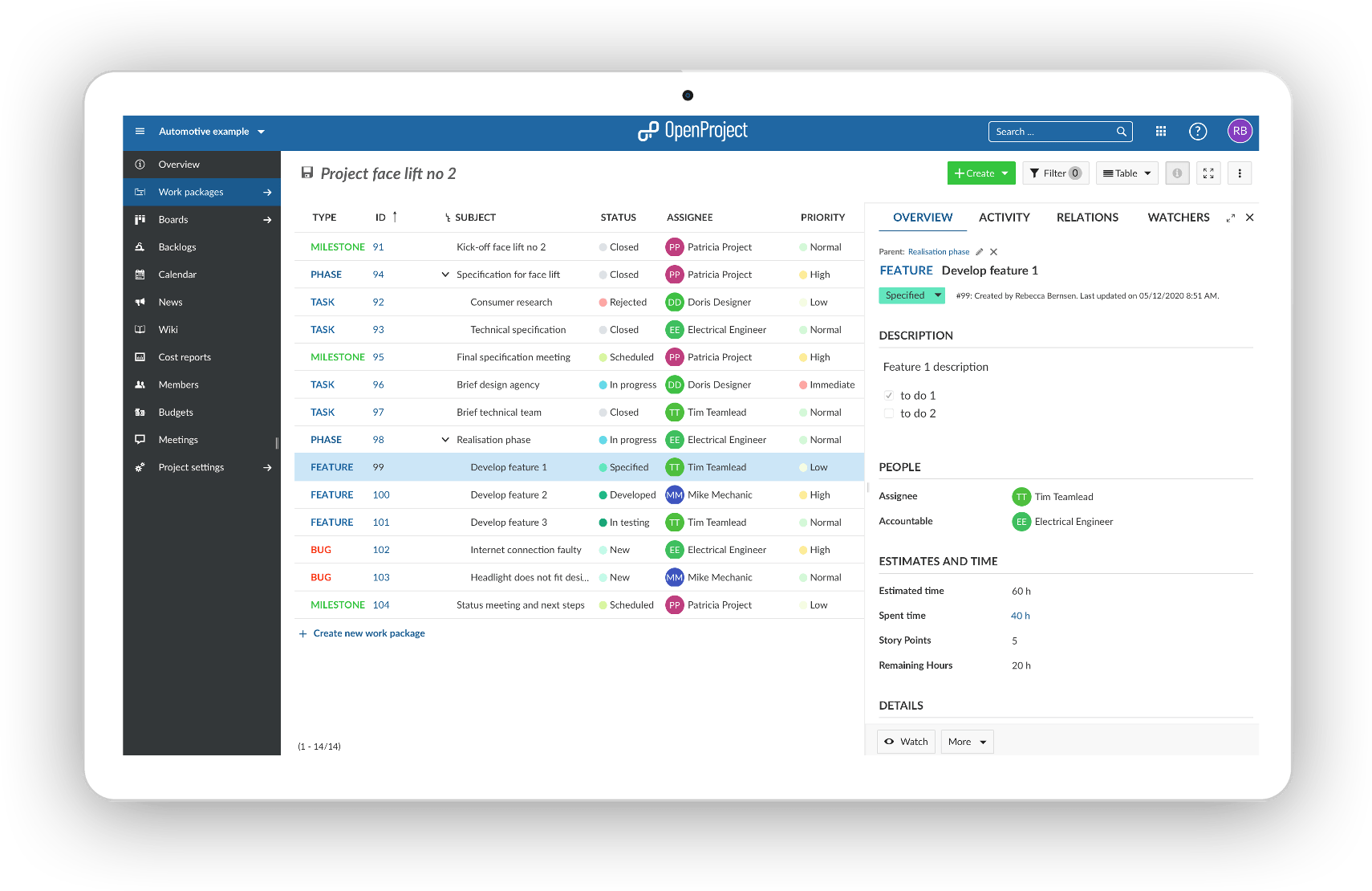
Project definition and planning
After having defined concept, goal and tasks, schedule your project with a timeline, for example a Gantt chart. Create a project management plan that shows how and when the project team will deliver the work packages and according milestones defined in the project scope. In OpenProject’s Gantt chart, you can display multiple projects in one gantt chart and highlight changes to the project schedule. Your calendar would show you all milestones and other important deadlines. In addition, OpenProject offers the roadmap feature that visualizes progress and next steps for all stakeholder in a big picture .
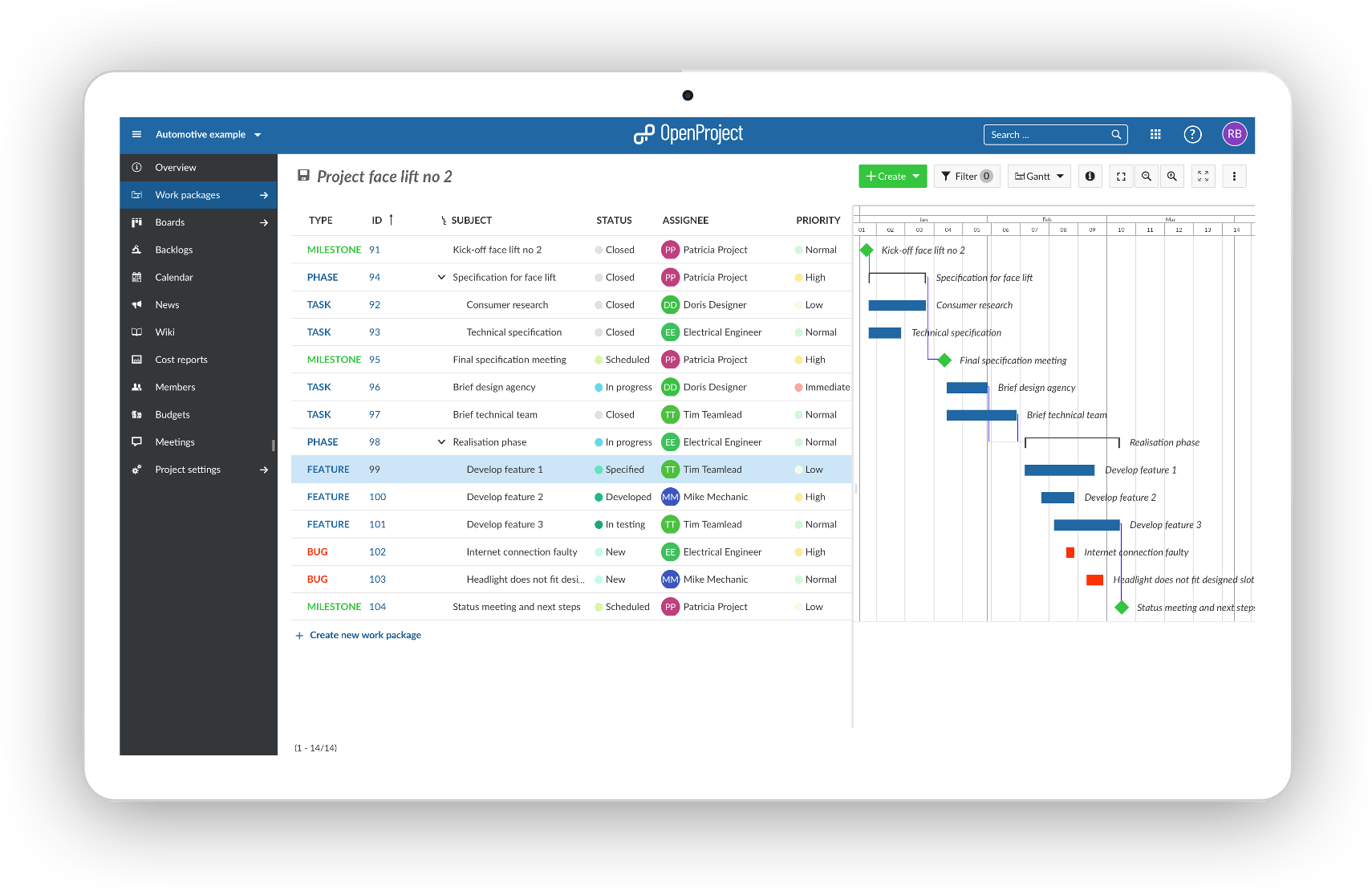
Project launch and execution
Often this phase takes up a lot of time but it is essential to plan it well to minimize risks and optimize the use of resources. During execution, project managers need to manage all project tasks, deliverables and activities. They have to stay on top of every possible issue - tasks, risks, features, bugs and much more. OpenProject allows you to manage this and have all information and communication in one place, it also gives you the option to define custom workflows and make it adapt to your needs.
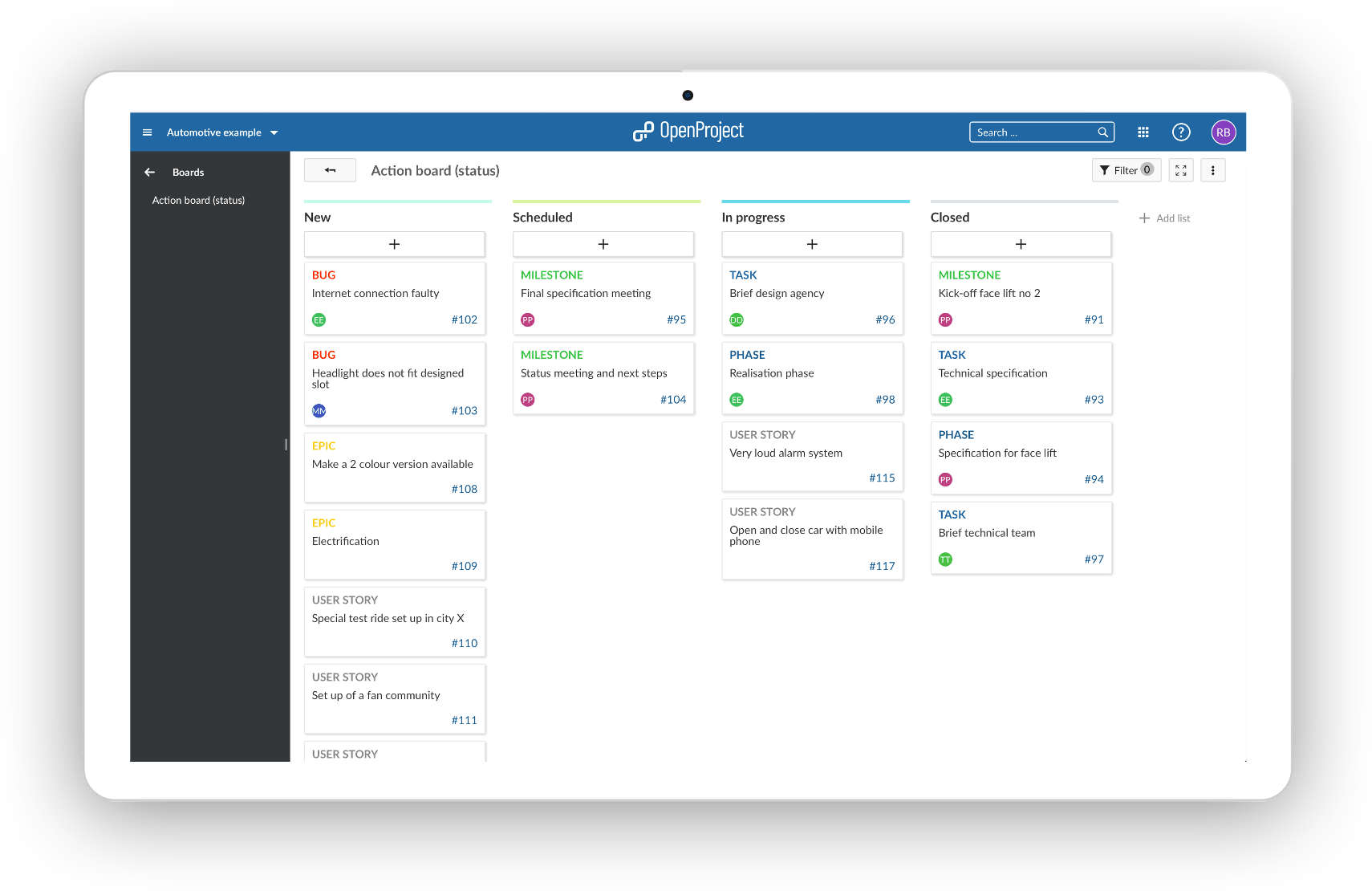
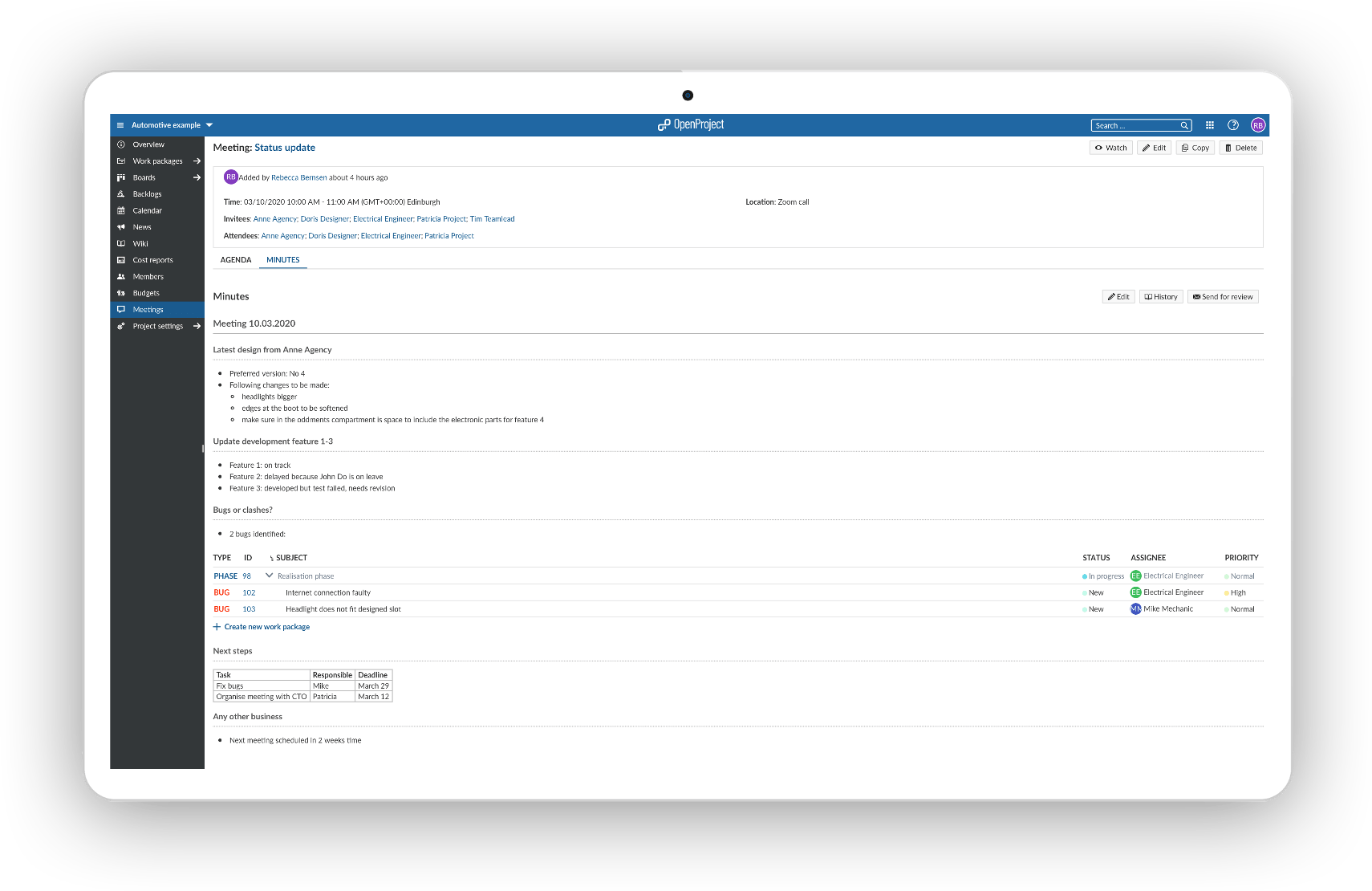
Performance and control
This project phase is closely linked with execution. Every project has a budget and a time frame. Project managers keep track of both and make sure that the team members finish on time and adhere to the budget. The project managers will check how the team’s efforts show in time and costs and will perform quality tests. OpenProject allows you to track your time and book costs which then makes it easy to monitor the progress for the project managers. They can easily draw a cost report with one click. The budget feature with one click. The budget feature gives the option to define a budget by labor and unit costs per project phase and monitor allocated vs spent budget.
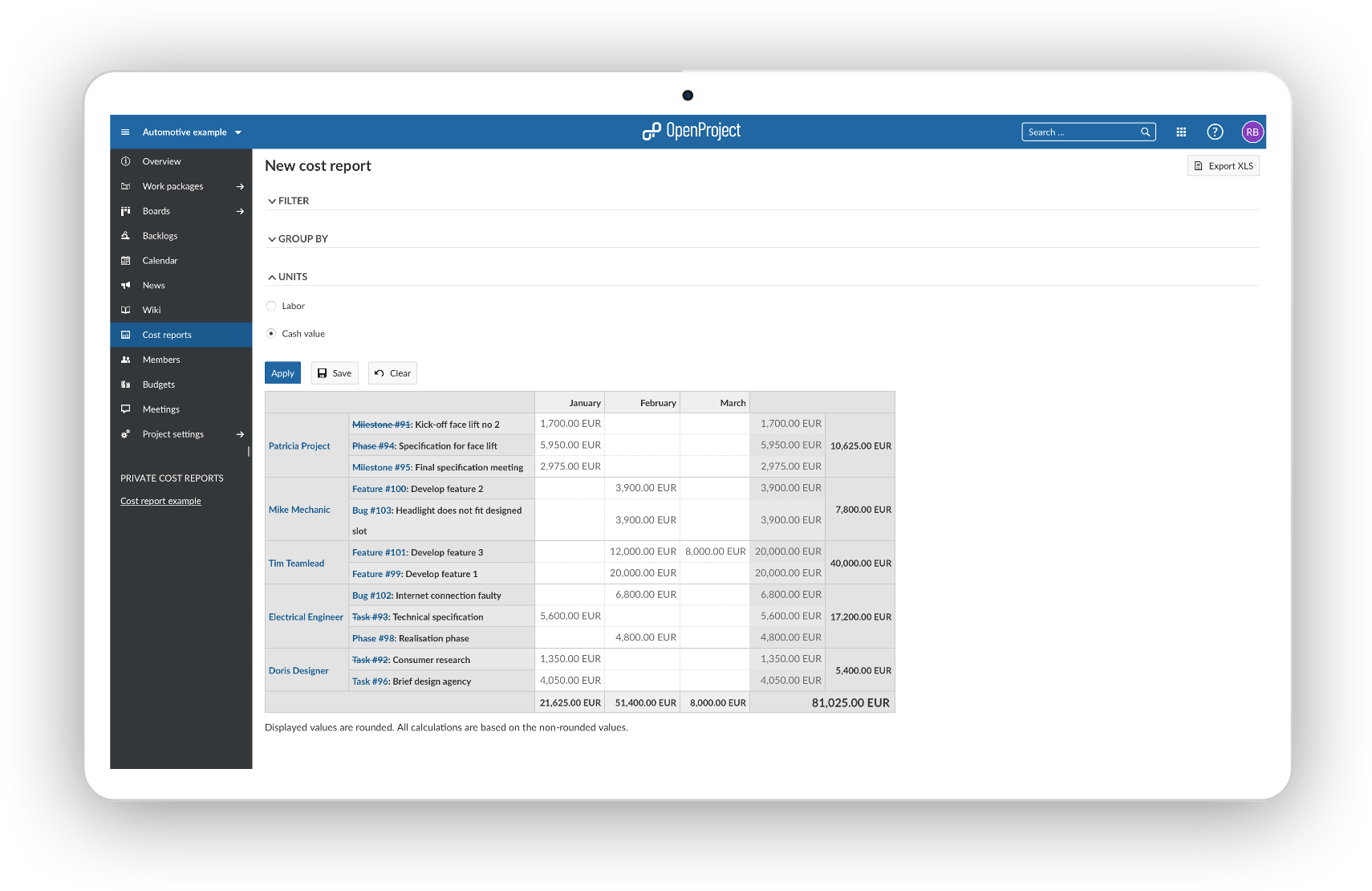
Project close
You can always learn from finished projects. So before going on to the next project, do a retrospective. OpenProject offers the wiki feature to create project closure reports and easily summarize the main results. Archive projects for later reference and lessons learned. Learn more about wikis.
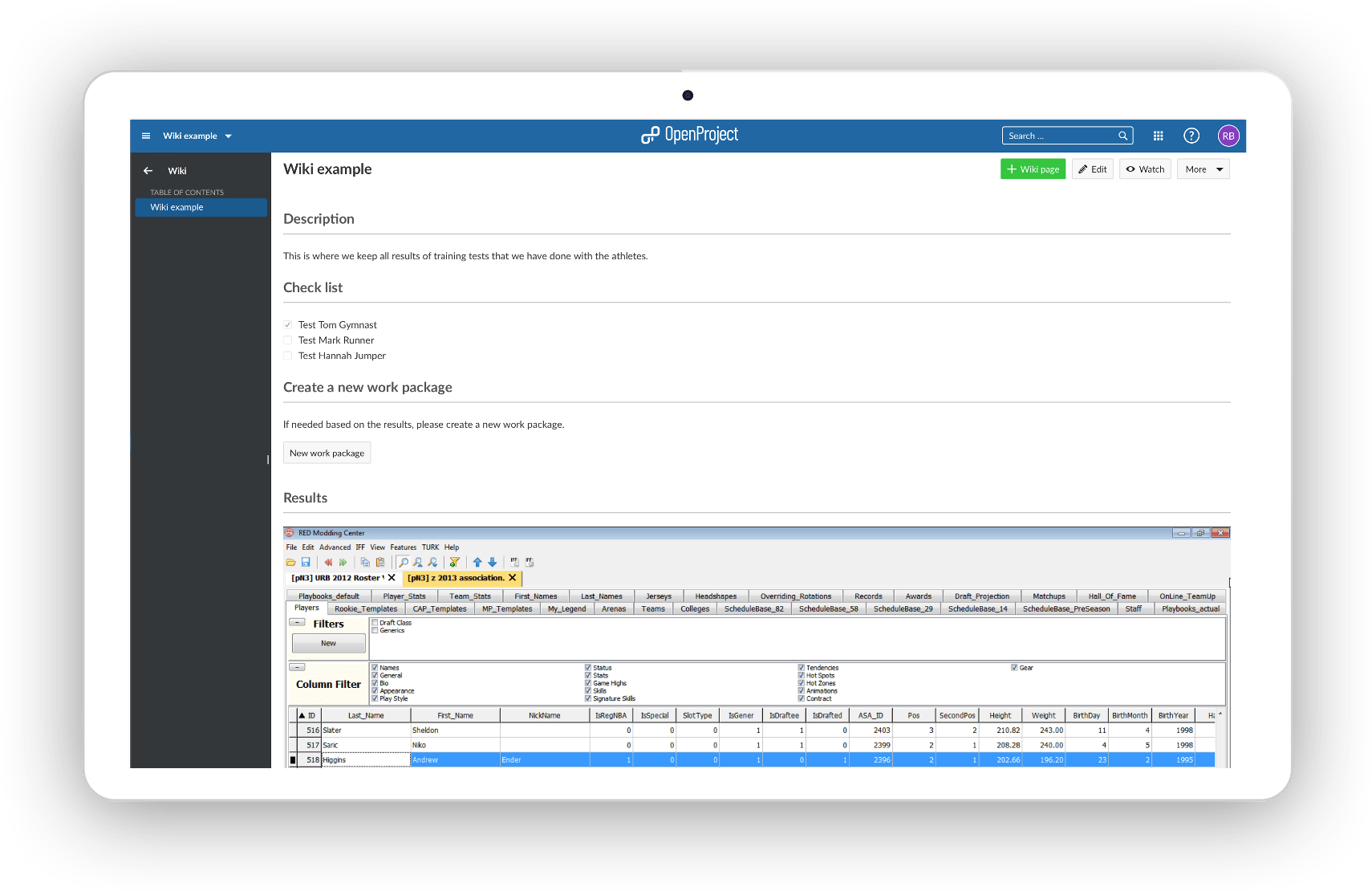
Start your free trial with OpenProject to improve your project management.


